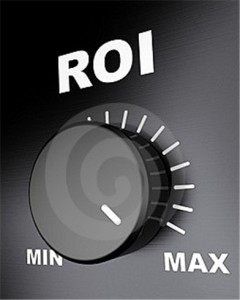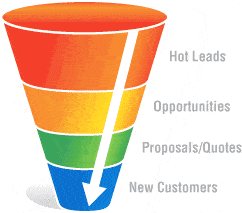How to Develop an Effective Marketing Automation Strategy
 An effective marketing automation strategy has the ability to quickly generate new customers and increased revenue. It gathers potential leads that are actively searching for information online, profile’s each lead’s interests, nurtures leads with helpful and relevant content, and then scores them to assess their potential for conversion. The process is efficient and automated, but a truly effective marketing automation strategy will also require a human touch.
An effective marketing automation strategy has the ability to quickly generate new customers and increased revenue. It gathers potential leads that are actively searching for information online, profile’s each lead’s interests, nurtures leads with helpful and relevant content, and then scores them to assess their potential for conversion. The process is efficient and automated, but a truly effective marketing automation strategy will also require a human touch.
It is All about the Customer
The first and most important focus must always be on satisfying the customer’s needs and concerns. This can be achieved by understanding the critical attributes of existing customers and then using those factors to create a lead scoring model.
What is the lead researching online?
What is their buying history?
What are their interests?
An effective marketing automation strategy is based on finding out as much information as possible on every potential lead. Clever marketers will use registration forms to block particularly valuable content, requiring leads to volunteer pertinent information prior to access. Marketing automation also uses online newsletter registries as a method for gaining greater insight into a lead’s characteristics.
Lead Profile & Ranking
Once this information is obtained, marketing automation software compares and ranks it using a profile of an ideal prospect. For an effective marketing automation strategy, the profile it is ranked against should as closely represent a typical buyer as possible. A good plan is to create the lead scoring using a collaboration of both the sales and marketing team’s experiences with current clientele.
Marketers know what landing pages and tutorials are bringing in business and the sale’s team understands what their customers need and want. Any marketing automation strategy will need both perspectives to effectively capture an accurate and complete lead profile.
Segment Leads into Groups
Using the information gathered for the profile, each lead will be segment in groups based on similar needs and wants. Marketing automation cannot effectively target every lead individually due to the massive volume of leads it generates. However, personalized campaigns make a huge difference in the eyes of the customer. Since the customer is the first priority of marketing automation, lead nurturing campaigns are created to target specific lead segments.
Content that Provides Value
The last fundamental aspect of marketing automation is creating relevant and informative lead nurturing content. The content that is being provided to lead must offer them real value. This is a business’ chance to brand themselves as experts in their field and earn the customer’s loyalty. All lead nurturing content must be focused on building relationships and trust.
An effective marketing automation strategy begins by profiling, ranking, and segmenting each lead. Once leads are grouped together and their needs are understood, quality content can be customized to satisfy their concerns. All of this is designed to produced more qualified leads and build stronger and longer-lasting customer relationships.









